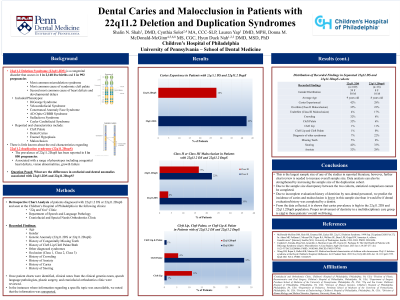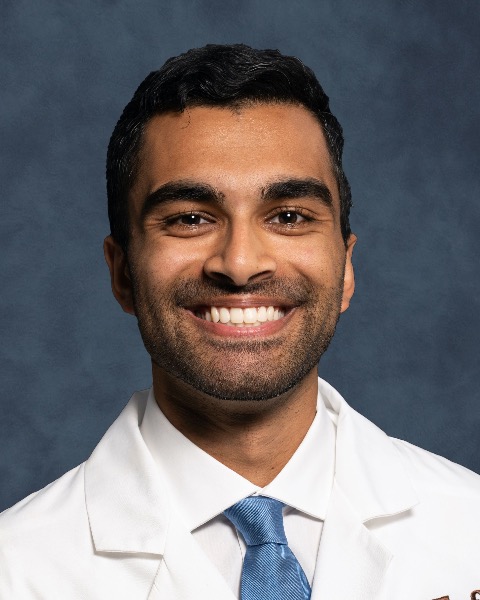Syndromes/Craniofacial Anomalies
262 - Dental Caries and Malocclusion in Patients with 22q11.2 Deletion and Duplication Syndromes


Shalin N. Shah, DMD
Resident
University of Pennsylvania School of Dental Medicine, Philadelphia, PA
University of Pennsylvania School of Dental Medicine, Philadelphia, PA
Troy, Michigan, United States- HN
Hyun-duck Nah-Cederquist, DMD, MSD, PhD
Children's Hospital of Philadelphia
- EH
Evlambia Hajishengalis, DDS, MSc, PhD, DMD
University of Pennsylvania School of Dental Medicine
- LY
Lauren Yap, DMD, MPH
University of Pennsylvania School of Dental Medicine
- LY
Lauren C. Yap, DMD, MPH
Assistant Director, Postdoctoral Pediatric Dentistry Program
University of Pennsylvania School of Dental Medicine
Philadelphia, Pennsylvania, United States - AO
Alina O'Brien, DDS
Program Director
University of Pennsylvania School of Dental Medicine
Philadelphia, Pennsylvania, United States
Presenting Author(s)
Co-Author(s)
Research Mentor(s)
Program Director(s)
Purpose: 22q11.2 deletion syndrome (22q11.2DS) is a congenital disorder that occurs in 1 in 2,148 live births and 1 in 992 pregnancies. Reported oral characteristics include cleft palate, dental caries, enamel hypoplasia and malocclusion; however, little is known about the oral features of the 22q11.2 duplication syndrome (22q11.2DupS). The prevalence of 22q11.2DupS has been reported in 1 in 850 pregnancies. The primary objective of this study is to compare the orofacial and dental anomalies associated with 22q11.2DS and 22q11.2DupS.
Methods: A retrospective chart review under an IRB approved study was conducted examining findings in patients with 22q11.2DS and 22q11.2DupS followed in the 22q and You Center at the Children’s Hospital of Philadelphia. Recorded findings included orofacial and dental observations, as well as calcium supplementation.
Results: Of the 127 patients evaluated in the Craniofacial and Orthodontics clinic, 109 had 22q11.2DS and 18 had 22q11.2DupS. Preliminary findings revealed: 28% caries, 22% overbite, 6% crowding, 6% missing teeth, and 6% cleft palate amongst those with 22q11.2DupS compared with 42% caries, 35% overbite, 32% crowding, 5% missing teeth, and 32% cleft palate in the 22q11.2DS group. Statistical analysis to compare these findings between groups is ongoing.
Conclusion: Orofacial and dental anomalies appear to be more prevalent in patients with 22q11.2DS compared with 22q11.2 DupS. Further investigation regarding specific differences in these groups, as well as contributions of comorbidities, CNV size, geocodes, etc. is ongoing, with a goal to aid in the inclusion of appropriate dental treatment in the multidisciplinary care of these complex patients.
Identify Supporting Agency and Grant Number:

.jpg)